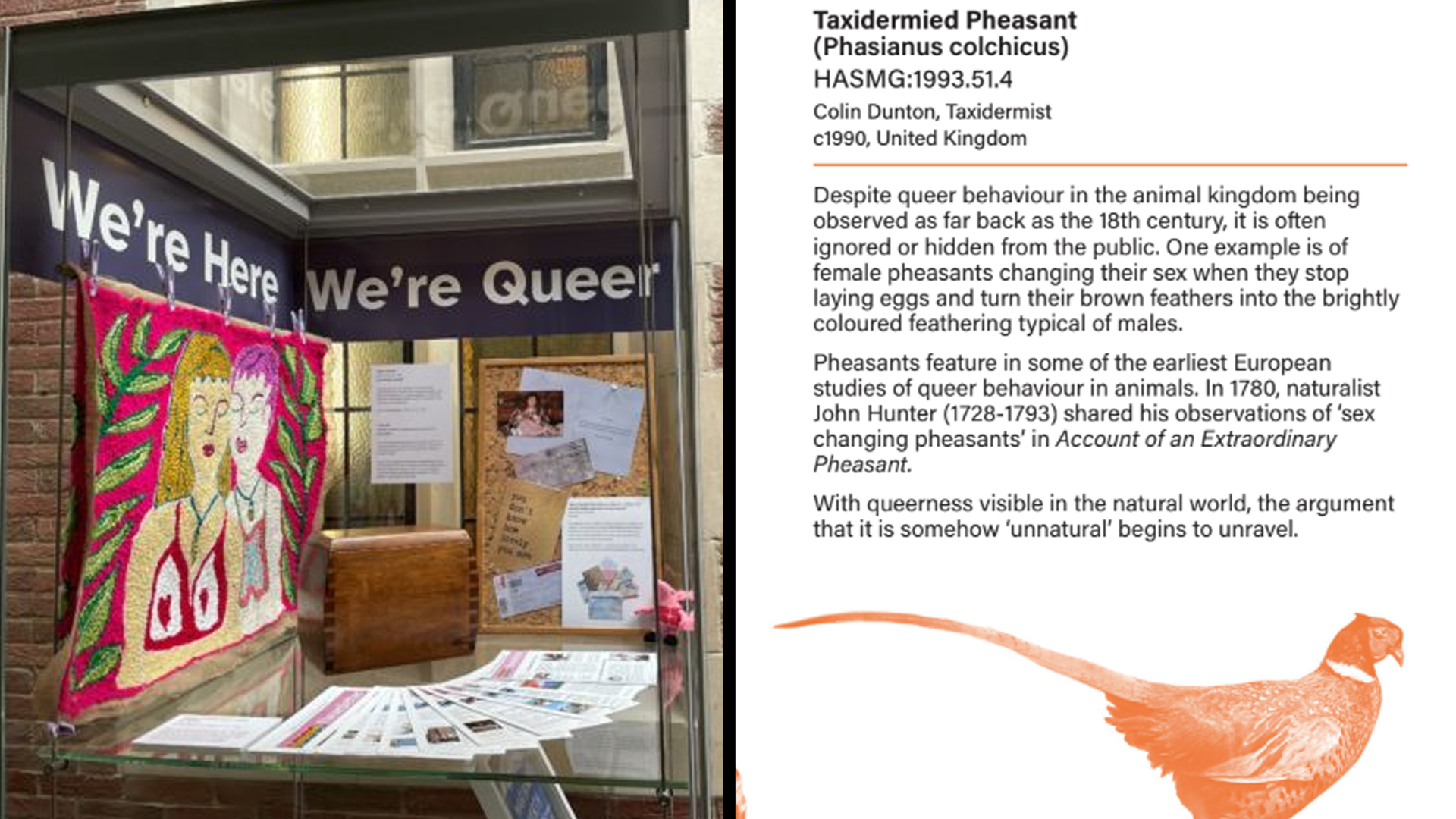A museum in the United Kingdom is facing mockery after claiming that some dinosaurs may have been queer. In its latest exhibition celebrating LGBT history, a pamphlet handed out to guests speculates on the sexuality of dinosaurs.
The LGBTQI+ History exhibit was founded in 2021 by the Hastings Queer History Collective, which consists of members of the gay and transgender community interested in Queer History and demanding representation in museum collections.
Part of the exhibit includes The Queer History Trail Map, which illuminates the trials and triumphs of eleven stories referred to as the collective’s “forebears.”
Included among the stories is one about a cast fossil of the herbivore’s footprint. Although the excerpt notes it cannot conclusively say that the dinosaur that made the fossil was a homosexual, it is a nod to LGBT history because Christopher Winter, the boy who found it, “is now grown-up, happily married to his husband Greg and living in a pink house in Hastings.”
Explaining how Winter first came across the fossil with his father at the age of 11, the description of the fossil notes that “queer history takes many forms, and in this case, it makes up an important part of the fossil’s provenance.”
The museum’s speculations about an extinct creature’s sexuality was met with ridicule online from many who were shocked it wasn’t satire. Jeremy Hambly, co-founder of The Publica, posted on X, formerly Twitter that “they are trying to trans dinosaurs now… I am dead. fu*king. Serious.”
They are trying to trans dinosaurs now…. I am dead. fu*king. serious. https://t.co/LfdaEmzUQr
— TheQuartering (@TheQuartering) March 28, 2024
Others joked that it makes sense that dinosaurs went extinct if they were all gay.
“That could explain how they went extinct. Their bird relatives avoided the scam.”
That could explain how they went extinct.
— Boat Guy (@OilGuy19) March 28, 2024
Their bird relatives avoided the scam.
In addition to theorizing the sexuality and gender identity of dinosaurs, the pamphlet also claims that pheasants are queer because female pheasants change their sex when they stop laying eggs.
“Despite Queer behavior in the animal kingdom being observed as far back as the 18th century, it is often ignored or hidden from the public. One example is of female pheasants changing their sex when they stop laying eggs and turn their brown feathers into the brightly colored feathering typical of males.”
“Pheasants feature some of the earliest European studies of Queer behavior in animals,” continues the pamphlet. “In 1780, naturalist John Hunter (1728-1793) shared his observations of ‘sex changing pheasants’ in an Account of an Extraordinary Pheasant.”
Concluding, the excerpt on pheasants adds: “With queerness visible in the natural world, the argument that it is somehow unnatural begins to unravel.”
Despite the museum’s bold claims, Dr Emma Hilton, a biologist and board director of the gender-critical campaign group Sex Matters, decried its statements about pheasants as “nonsense”
“The only vertebrates that change sex are all fish. Birds do not change sex,” she said. “Often in the process of aging, female animals can produce male features as a result of hormonal changes, we can also see this in humans following the menopause, but we would not say that older women had changed sex if they have a bit of a mustache. These kinds of claims can be very wearying.”
In addition to the exhibit highlighting several other gay historical figures, the pamphlet also asserts under its description of a Samurai Suit of Armor that 18th-century colonialism is to blame for “the destruction of many ancient gender systems in countries around the world.”






